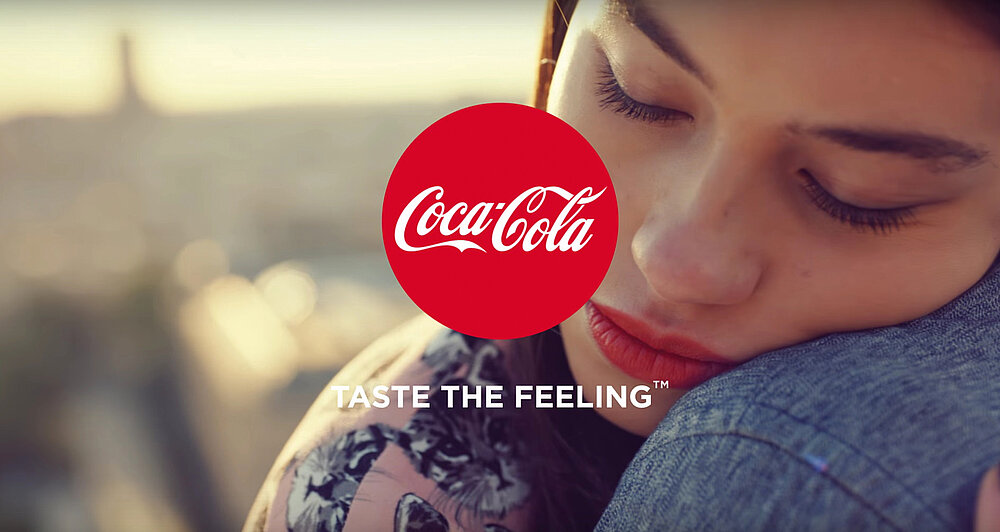And so begins a sophisticated advertising battle – and every strike counts. Each of the competing giant brands has its trump card up its sleeve – some rely on humour, others on emotions, and some on provocation. It’s not just about who has the better product, but who can make customers trust them more than the competition. There is only one rule: the one who grabs attention wins. The fight for attention is ruthless, taking place on TV screens, social media, and even out of home. If you make just a small mistake, the competitor will immediately take advantage of it.
Winner takes all
While some brands bet on nostalgia, reminding customers how they grew up with them, others choose the path of light-hearted boldness that sparks discussion. A well-crafted advertisement can become viral, spreading across the internet at lightning speed. In this game, it’s about more than just marketing – it’s about image, prestige, and, above all, money. Advertising wars are battles for market dominance, where the winner is the one who can create the strongest connection between the brand and its customers.
The top weapon in the brand’s arsenal is naturally television advertising. It carries a stamp of quality and the highest level of trustworthiness, ensures the greatest recall among viewers, offers valuable content, provides a safe environment for brand communication, can provoke a quick response, and guarantees a high return on investment.
Different brands, different strategies
Even high spending on advertising may not be enough for a brand to stand out. That’s why the market giants choose various strategies to help them differentiate. They may decide to strike a chord with consumers’ deepest emotions by using nostalgia, humour, or emphasising family values in their campaigns. This is typical of the sentimental campaigns of Coca-Cola. For example, the legendary ads with Coca-Cola’s iconic Christmas trucks and the slogan “Holidays are Coming”. When it comes to emotions, Coca-Cola is a true expert. After all, it’s the bottle of their drink that keeps a quarrelling couple from breaking up:
Video: Coca-Cola
Bolder brands may opt for slightly tricky comparative advertising – such is the case with the fast-food chain Burger King, which has frequently taken jabs at its competitor McDonald’s. Similar provocations also occur between BMW and Mercedes-Benz. However, BMW doesn’t limit itself to just one rival. The German manufacturer has also made subtle digs at the renowned Audi brand and even poked fun at Tesla. Of course, this type of advertising is common in the American market, where such strategies are more widely accepted.
Video: BMW – Wait or Drive
Brands can highlight their ethical values and perception of social responsibility, such as sustainability and green technologies. This is often the case with car manufacturers – Toyota promotes hybrid technology and sustainability, while Tesla and Volkswagen focus on electromobility.
Video: Toyota – Beyond Zero
Provocative advertising works wonders to stand out among strong competition, often involving controversial or viral elements to grab attention. Brands from various segments love using this type of advertising. For example, in 2018, Burger King offered its Whopper for 1 cent to customers near a McDonald’s restaurant, and in 2020, it showcased a mouldy Whopper as proof of the absence of preservatives.
Video: Burger King – Moldy Whopper
Other brands that aren’t afraid of more provocative advertising include Benetton with its controversial campaigns, Nike, which in 2018 spoke out against police brutality, and Calvin Klein, which used the young Brooke Shields in its advertisements.
Reactive marketing works perfectly
This marketing strategy involves reacting to the current actions of competitors or viral trends in real time. Brands use it to quickly respond to competitors’ campaigns or to capitalise on popular topics to increase visibility. In addition to Burger King, which regularly reacts to McDonald’s campaigns, brands like Pepsi, competing with Coca-Cola, also boost their popularity in this way. The Wendy’s brand often criticises its competition with the help of sharp humour. Furniture giant IKEA, on the other hand, responds to various cultural and political events with its playful ads.
Reactive marketing pays off because it increases audience engagement. Customers enjoy reacting to current, often humorous, content. Additionally, it contributes to brand building – it helps create a stronger identity by interacting with competitors. Last but not least, these ads reacting to current events often go viral and spread across the internet incredibly quickly.
Brands don’t want to share customers
When strong rivals meet on the market, there’s no time for niceties. No one wants to share customers. And in the battle raging between brands, the main weapon beyond product quality is the power of advertising. It’s not enough just to be seen. What matters is who customers remember, who they grow fond of, and who they come back to. Sometimes, the key is cleverness, other times boldness and often, the ability to strike at just the right moment. Brands have long known that it’s not just about selling a product but about building an image, achieving iconic status, and securing an unshakable position in the market. And so, the advertising battles continue with the only weapons being creativity, boldness, and the ability to outsmart the competition. Television advertising is a great ally for these battles.

